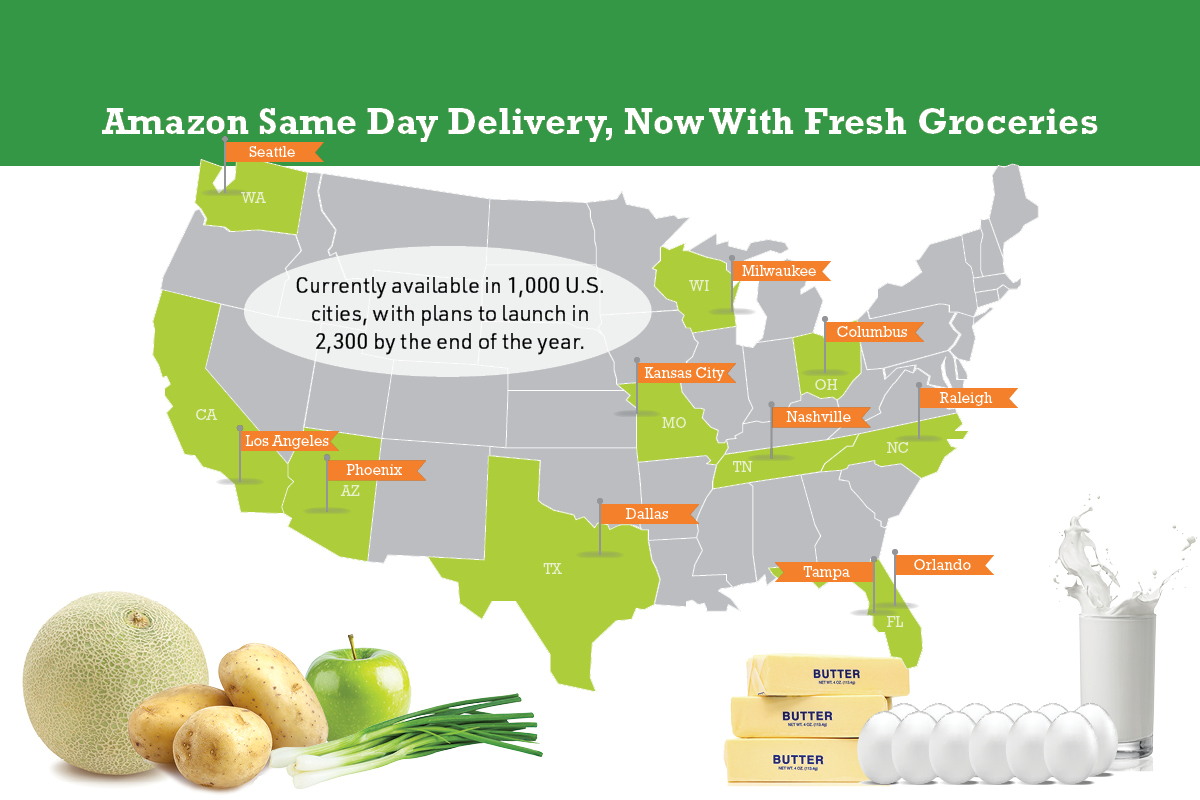Amazon’s August announcement that it would add fresh perishables — including produce, meat, dairy, seafood and frozen items — to its same-day delivery service in more than 1,000 U.S. markets gained notice across the grocery industry. The move integrates fresh groceries with Amazon’s existing same-day assortment of household goods, electronics and more, and it is set to expand to over 2,300 cities by the end of 2025.
While this signals a bold play in the quick-commerce arena, industry experts caution that its implications will ripple far beyond consumer convenience.
“If Amazon gets same-day produce right at scale, their sales ceiling is high,” says Ford Smith, founder and CEO of A1 Xpress, a courier and trucking company specializing in rush deliveries. “Most shoppers still buy fruits and vegetables in person because they don’t trust anyone else to pick them. Once that gap is closed, it stops being a niche service and becomes a habit.”
Smith sees potential for the erosion of in-store produce sales, especially for repeat purchases like greens and bagged vegetables.
“If a shopper can get those delivered reliably the same day, there’s less reason to stop at the store during the week,” he says. “It won’t eliminate in-person shopping, but it will shrink the number of trips.”
David Bishop, partner at Brick Meets Click, echoed the importance of execution.
“The key for Amazon is driving trial, as that’s the only way they can build trust with customers that they’re capable of providing quality fresh products this way,” Bishop says.
He adds that Amazon’s pricing structure — which waives added costs like gratuities and offers free delivery for Prime members over $25 — creates a meaningful advantage over rivals.
“From my firsthand experience this week, they delivered against the promise. Everything I ordered arrived in good condition and within the first 30 minutes of the window,” Bishop says.
Both experts highlighted the potential impact on smaller grocers and rival platforms.
“This could be a one-two punch to smaller grocers as Amazon’s new service offering could impact quick trips made in-store as well as steal fresh sales online,” Bishop says. “Although this is often described as a delivery service, it’s actually fulfilled via its ship-to-home operating mode, which is how it gains a cost advantage over existing delivery service.”
Smith adds that while rural grocers may feel the effects more slowly, the ripple will spread as delivery networks expand.
“If Amazon’s same day model proves scalable, it won’t take long before shoppers in outlying areas expect the same convenience they’ve seen work in cities,” he says. “That’s a challenge for local stores that don’t have the infrastructure to deliver or the volume to compete on price.
“Even if it starts in metro zones, the ripple effect is going to reach rural areas as delivery networks expand,” he adds.
As for competitors like Walmart and Instacart, Smith warns the bar is rising.
“If Amazon can deliver fresh produce in four hours without substitutions or stock issues, shoppers will expect that standard across the board,” he says.
“I think services that rely on in-store pickers or inconsistent inventories will lose ground if Amazon’s model feels more predictable,” he adds. “Instacart and Walmart still have reach and brand loyalty, but they’ll need to tighten fulfillment if they want to hold onto produce sales in same-day windows.”
For suppliers, Amazon’s expanded service could represent both risk and opportunity: a new channel for moving more produce quickly, but also heightened pressure on quality, fulfillment and margins. As Amazon doubles down on fresh delivery, the question is no longer whether consumers will adopt online produce shopping — but how quickly and at whose expense.
Your Next Read: Amazon Adds Fresh Perishables to Same-Day Delivery in over 1K Cities















